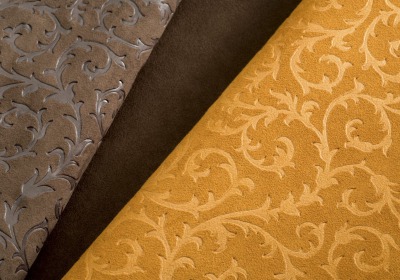Man-made Modern Luxury Materials in Cars
Mon, 29 Sep 2008Luxury, within the context of a car interior, has been closely related to the use of wood and leather for over a century. These natural materials have a familiar organic, tactile quality that are intrinsically desirable attributes for most people and, in today's mass manufactured plastic world, they also assume a luxury or premium quality.
Throughout the last century, metal, leather and wood have also been progressively supplanted by bakelite, vinyl and then polymer-based plastic materials in car interiors as well. Initially plastic had a new (and therefore desirable) quality in cars, much in the same way that Napoléon Bonaparte had the world's only set of aluminum cutlery for his most important dinner guests 200 years ago. Everyone else at his table had to make do with silver.
Today, more so than ever before, there is a common perception that leather is the material of choice for a car's soft furnishings. Designers have little alternative but to specify this material for any upper-premium to luxury car. There is, however, one particular exception to this rule: Alcantara.
Alcantara is a unique type of man-made material that has much of the organic and tactile qualities associated with leather, and several other qualities as well. The material was invented in 1970 by Dr. Miyoshi Okamoto in Japan who then chose an Italian commercial partner to take the new material to market. Since then, Alcantara has become established in the automotive sector with many premium brands such as Audi, BMW, Lamborghini, Mercedes-Benz and Porsche using the material for seating, door furnishing, and roof linings.
The material has the central quality of a fine, suede-like soft texture. But, unlike suede or other leathers, Alcantara is softer, can be boldly colored and has several functional benefits: its high coefficient of friction locates the occupant more securely in their seat than any other car furnishing material, it is dimensionally stable when wet, and is light for its strength - a whole car interior covered with Alcantara is from 30 to 50 percent lighter compared to leather.
Relative to leather, the material also has the benefit of 'breathability', which means that it is not too hot in summer or too cold in winter. Alcantara can also be combined with several materials - such as metals, resins and foams - without changing the surface appearance. It can be applied using different technologies, such as standard cut and sew, thermo-forming, in-situ Reaction Injection Molding, and In Mold Decoration. The Alcantara company then adds to the material's intrinsic qualities by offering many different treatments: perforation, embossing, embroidering, laser cutting, lamination, electro- and thermo-welding and printing.
Alcantara is a good example, if not the only example, of a man-made material for car interiors that has organic tactile qualities typically associated with natural materials. Its success in the market illustrates what premium car buyers want and expect from car interior materials to such an extent that its brand name is now referenced by car companies because it is recognized as having a strong added value by consumers - a unique achievement.
With many other areas of car interiors still reliant on generic plastics - often with an embossed leather grain - and occasionally a veneer of wood or thin strip of metal, there seems to be a significant opportunity for new man-made materials to cater to the many consumers wanting modern interior environments. For these buyers, and the makers of the vehicles in which it is featured, Alcantara has established itself as the desirable, premium material of choice for car interiors.
Alcantara website: www.alcantara.com
By

